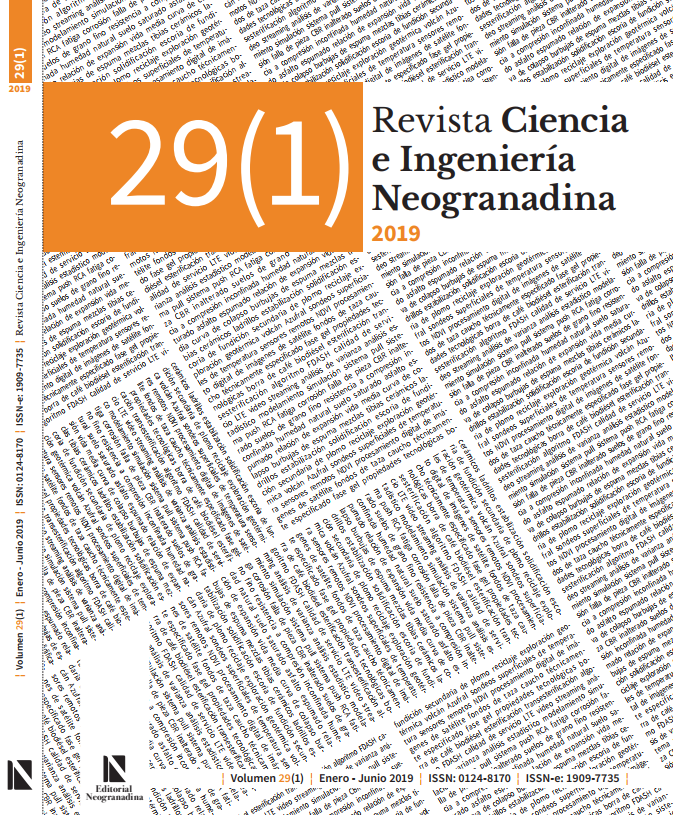Foamed Bitumen Characterization Techniques
Abstract
In soil stabilization and pavement recycling, the expansion ratio and half-life parameters
have been considered to defne foamed bitumen quality relatively well. However, when applying
foamed bitumen technology in the production of warm mixtures, these properties are determined
to be insufcient to characterize the foam and guarantee complete aggregate coverage from the
bitumen, adequate workability, and easy mixture compaction, together with appropriate mixture
behavior in service. This has led to conclusive studies on the need to establish, along with the expansion and half-life relation, the collapse curve and bubble size distribution in foamed bitumen.
Several studies also recommend safer and more reliable techniques for measuring foam properties.
Additionally, we summarize the techniques currently being explored by the testing laboratories at
the Julio Garavito Colombian School of Engineering to characterize foamed bitumen produced in
the WLB-10S laboratory foamed bitumen plant. These techniques include invasive measures, such
as the calibrated dipstick and the foamed bitumen collapse test, along with non-invasive measures,
such as image processing and using infrared sensors. Finally, the paper denotes the potential of each
technique by revealing some results from the measurements obtained through their application.
Downloads
Languages:
esReferences
F. Yin, E. Arámbula-Mercado, and D. Newcomb, “Effect of laboratory foamer on asphalt foaming characteristics and foamed mixture properties,” Int. J. Paving Eng., vol. 8436, no. January, 2015.
National Asphalt Pavement Association NAPA, “Asphalt Pavement Industry Survey on Recycled Materials and Warm-Mix Asphalt Usage,” vol. 138. pp. 1–40, 2015.
K. J. Jenkins, M. van de Ven, and J. de Groot, “Characterisation of foamed bitumen,” 7th Conf. Asph. pavements South. Africa, pp. 1–18, 1999.
K. J. Jenkins, “Mix Design considerations for cold and half-warm bituminous mixes with emphasis on foamed bitumen,” no. September. Stellenbosch, 2000.
K.J. Jenkins and M. van de Ven, “Guidelines for the mix design and performance prediction of Foamed bitumen mixes,” in 20th South African Transport Conference, 2001.
M. Saleh, “Characterization of Foam Bitumen Quality and the Mechanical Properties of Foam Stabilized Mixes,” Univ. Canterbury. Civ. Eng., 2006.
D. Newcomb et al., NCHRP - REPORT 807. Properties of Foamed Asphalt for Warm Mix Asphalt Applications. Transportation research Board, 2015.
D. Lesueur et al., “Foamability and Foam Stability,” Road Mater. Pavement Des., vol. 5, no. 3, pp. 277–302, 2004.
G. P. He and W. G. Wong, “Decay properties of the foamed bitumens,” Constr. Build. Mater., vol. 20, no. 10, pp. 866–877, 2006.
Z. He and W. Lu, “Research on the properties of road building materials treated with foamed bitumen in China,” Proc. 8° Conf. Asph. Pavements Soudthern Africa (CAPSA 04), no. September, pp. 2–9, 2004.
H. Ozturk, “Quantification of quality of foamed warm mix asphalt binders and mixtures,” Michigan State University, 2013.
B. W. Hailesilassie, P. Schuetz, I. Jerjen, M. Hugener, and M. N. Partl, “Dynamic X-ray radiography for the determination of foamed bitumen bubble area distribution,” J. Mater. Sci., vol. 50, no. 1, pp. 79–92, 2014.
B. Hailesilassie, P. Schuetz, I. Jerjen, A. Bieder, M. Hugener, and M. Pratl, “Evolution of bubble size distribution during foam bitumen formation and decay,” Asph. Pavements, 2014.
B. W. Hailesilassie, M. Hugener, A. Bieder, and M. N. Partl, “New experimental methods for characterizing formation and decay of foam bitumen,” Mater. Struct., vol. 49, no. 6, pp. 2439–2454, 2016.
G. Martinez-Arguelles, F. Giustozzi, M. Crispino, and G. W. Flintsch, “Investigating physical and rheological properties of foamed bitumen,” Constr. Build. Mater., vol. 72, pp. 423–433, Dec. 2014.
Z. Arega, A. Bhasin, and W. Li, “Parametric Analysis of Factors That Affect Asphalt Binder Foaming Characteristics,” ASCE Civ. Eng., pp. 1–10, 2015.
J.P. Aurrand Lions, “Application of fuzzy control for ISIS vehicule braking. proceedings of Fuzzy and Neuronal System, and Vehicule Applications,” 1991.

| Article metrics | |
|---|---|
| Abstract views | |
| Galley vies | |
| PDF Views | |
| HTML views | |
| Other views | |











